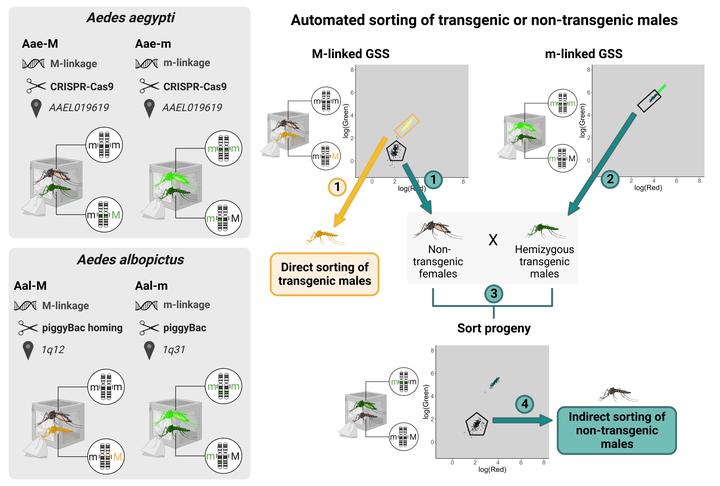Combining two genetic sexing strains allows sorting of non-transgenic males for Aedes genetic control
 Graphical abstract
Graphical abstractAbstract
Chemical control of disease vectoring mosquitoes Aedes albopictus and Aedes aegypti is costly, unsustainable, and increasingly ineffective due to the spread of insecticide resistance. The Sterile Insect Technique is a valuable alternative but is limited by slow, error-prone, and wasteful sex-separation methods. Here, we present four Genetic Sexing Strains (two for each Aedes species) based on fluorescence markers linked to the m and M sex loci, allowing for the isolation of transgenic males. Furthermore, we demonstrate how combining these sexing strains enables the production of non-transgenic males. In a mass-rearing facility, 100,000 first instar male larvae could be sorted in under 1.5h with an estimated 0.01–0.1% female contamination on a single machine. Cost-efficiency analyses revealed that using these strains could result in important savings while setting up and running a mass-rearing facility. Altogether, these Genetic Sexing Strains should enable a major upscaling in control programmes against these important vectors.